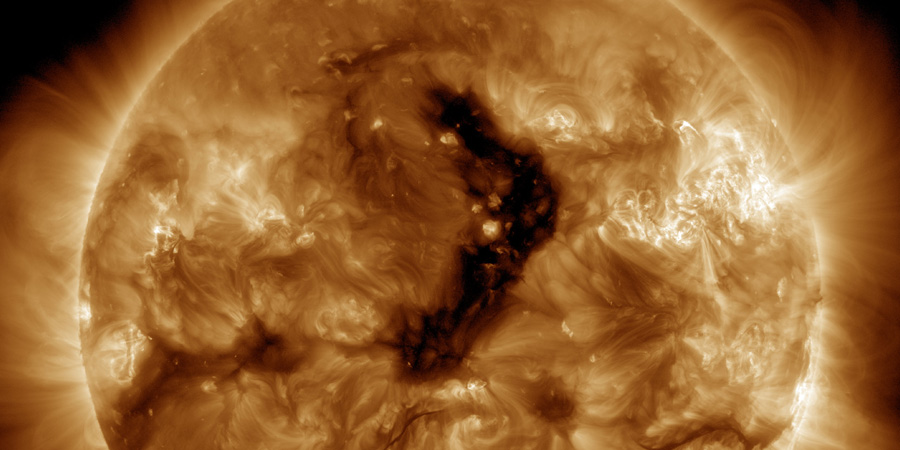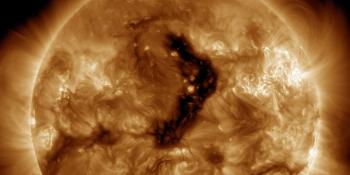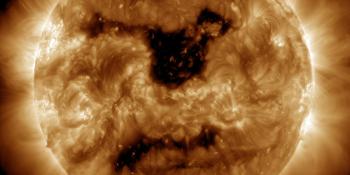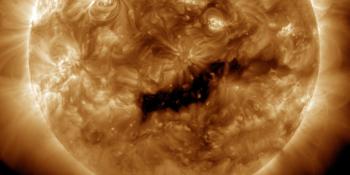Coronal hole faces Earth, Minor G1 geomagnetic storm watch
Friday, 7 February 2025 19:26 UTC

Geomagnetic conditions have been relativity quiet lately with no strong geomagnetic storms to speak of. Coronal holes are however making a return and we are seeing them more regularly appearing and influencing the weather in space around Earth and thus the aurora dancing above our heads.
As a matter of fact, we have a very nice trans-equatorial coronal hole facing our planet right now. While we expect background solar wind conditions to continue today and tomorrow, on Sunday (9 February) we should start to see the arrival of a high speed solar wind stream flowing from this coronal hole. In response to this, the NOAA SWPC has issued a minor G1 geomagnetic storm watch for the following day which would be Monday, 10 February.
A northern hemisphere coronal hole is facing Earth. Enhanced solar wind could arrive in ~3 days - Follow live on https://t.co/bsXLidnzGh pic.twitter.com/b8SeUpsC6P
— SpaceWeatherLive (@_SpaceWeather_) February 7, 2025
Meanwhile, our Sun has been reasonable active the past few days with sunspot region 3981 taking center stage as the most complex and active sunspot region. It has produced numerous M-class solar flares including an M7.5 solar flare today but none of the flares have been (very) eruptive or produced a coronal mass ejection with an earth-directed component. Have we passed solar maximum? What do you think? Leave your comment below!
Thank you for reading this article! Did you have any trouble with the technical terms used in this article? Our help section is the place to be where you can find in-depth articles, a FAQ and a list with common abbreviations. Still puzzled? Just post on our forum where we will help you the best we can!
Latest news
Latest forum messages
Support SpaceWeatherLive.com!
A lot of people come to SpaceWeatherLive to follow the Sun's activity or if there is aurora to be seen, but with more traffic comes higher server costs. Consider a donation if you enjoy SpaceWeatherLive so we can keep the website online!

Space weather facts
| Last X-flare | 2025/01/04 | X1.85 |
| Last M-flare | 2025/02/08 | M2.0 |
| Last geomagnetic storm | 2025/01/04 | Kp5 (G1) |
| Spotless days | |
|---|---|
| Last spotless day | 2022/06/08 |
| Monthly mean Sunspot Number | |
|---|---|
| January 2025 | 137 -17.5 |
| February 2025 | 165 +28 |
| Last 30 days | 146.6 -4.3 |


